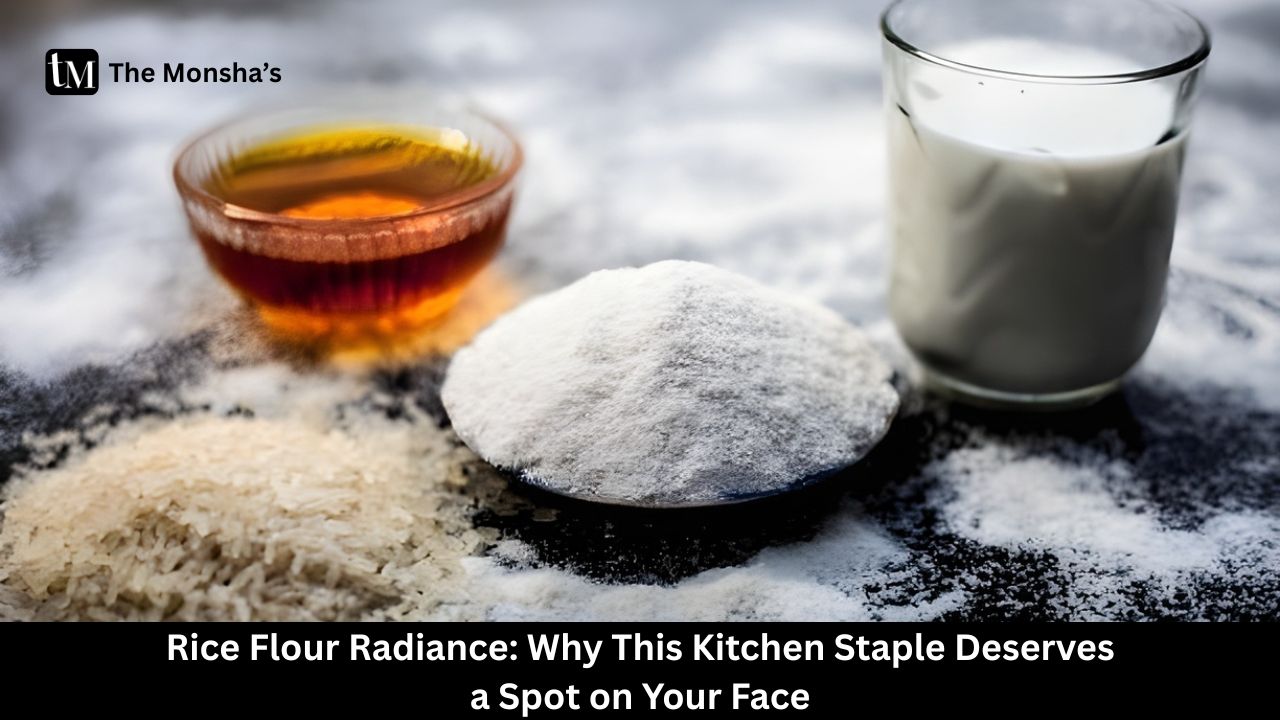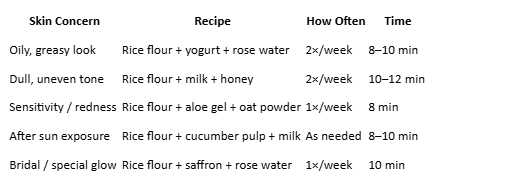
Rice flour is more than just a cooking ingredient—it can absorb oil, gently exfoliate, and brighten dull skin. Studies and traditional use both back its role in mattifying, soothing, and supporting the skin barrier. When paired with soothing mixers (milk, yogurt, honey, aloe), it works best. Don’t expect miracles for scars or pigmentation, but do expect a smoother, fresher face. Use 1–3 times a week max, never daily, and always go easy on pressure. 🌸
We’ve all had those days: your skin feels greasy, your pores are screaming, and makeup slides off by noon. One such day, in a half-sleep daze, I grabbed rice flour from the kitchen and slapped it on. To my surprise, it worked—calmer, matte skin, a subtle glow. That was my “conversion moment” for rice flour in skincare.
It’s old-school, yes, but not outdated. And with what recent dermatology research says about rice components (antioxidants, phenolic compounds, soothing proteins), rice flour is making a quiet comeback. Let’s break down the real benefits, the DIY recipes that don’t wreck your skin, and the common mistakes you’ll want to avoid.
Rice flour is simply ground rice—white, brown, or glutinous. Unlike rice water or bran oil, it gives skin a fine, grainy texture that doubles as an absorbent and mild exfoliant.
Key skin-friendly bits in rice:
So, while your nani used it for face packs, today’s beauty labs also sneak rice flour or rice extracts into blotting powders, mattifying primers, and scrubs.
Rice starch and flour are natural oil absorbers. This is why compact powders often contain “rice starch” in the ingredients list. Using it as a mask helps reduce greasy shine without stripping completely.
The fine particles polish the skin surface, removing dead cells. Clinical comparisons show rice flour scrubs lead to pore refinement and smoother texture—less abrasive than walnut or apricot scrubs.
Research on rice-derived compounds highlights their UV-protective, antioxidant, and skin barrier boosting effects. Fermented rice extracts, for instance, improve hydration and strengthen proteins that keep skin supple. Rice flour is the humble, less concentrated cousin—but still effective.
So treat it like that trusty friend—not a magician.

Frequency Tip:
Lesson? Jo cheez kitchen mein hai, usko spa treatment samajh ke mat use karo.

Rice flour has been in DIY beauty forever, but it holds up even with today’s knowledge. It absorbs oil, smooths, and gives a soft glow. But the trick is moderation—short contact, gentle handling, good mixers. Don’t overdo, don’t expect miracles, and it’ll reward you with calm, matte, refreshed skin.
Bas, thoda dimaag aur thoda pyaar lagana padta hai. 💛
Q. Can rice flour remove acne scars?
Not really. It can brighten and polish, but deep scars need dermatologist treatments.
Q. Can I use rice flour daily?
No. It’ll dry and irritate your skin. Stick to 1–3× a week.
Q. Which rice flour is best—white, brown, or glutinous?
Any fine, fresh, unscented flour works. Just sieve it so it’s soft.
Q. Can I leave rice flour overnight?
Nope. It will over-dry and feel tight. Short 10-minute masks are best.
Q. Is rice flour safe for sensitive skin?
Yes, but only with soothing mixers (aloe, oats, honey). Always patch test first.